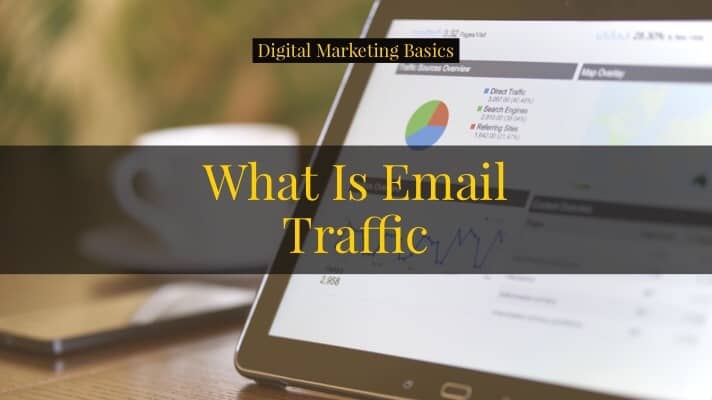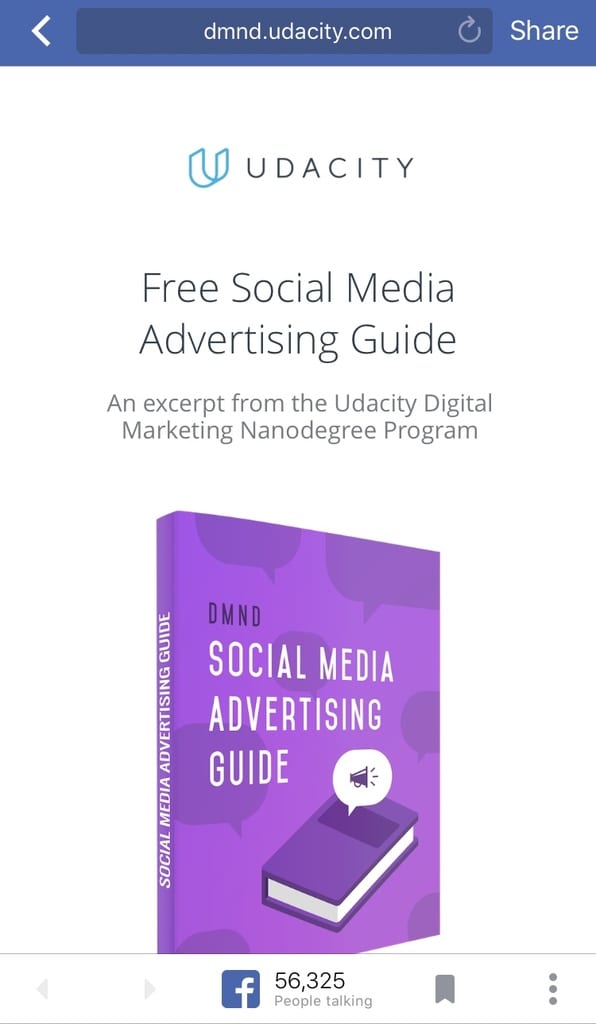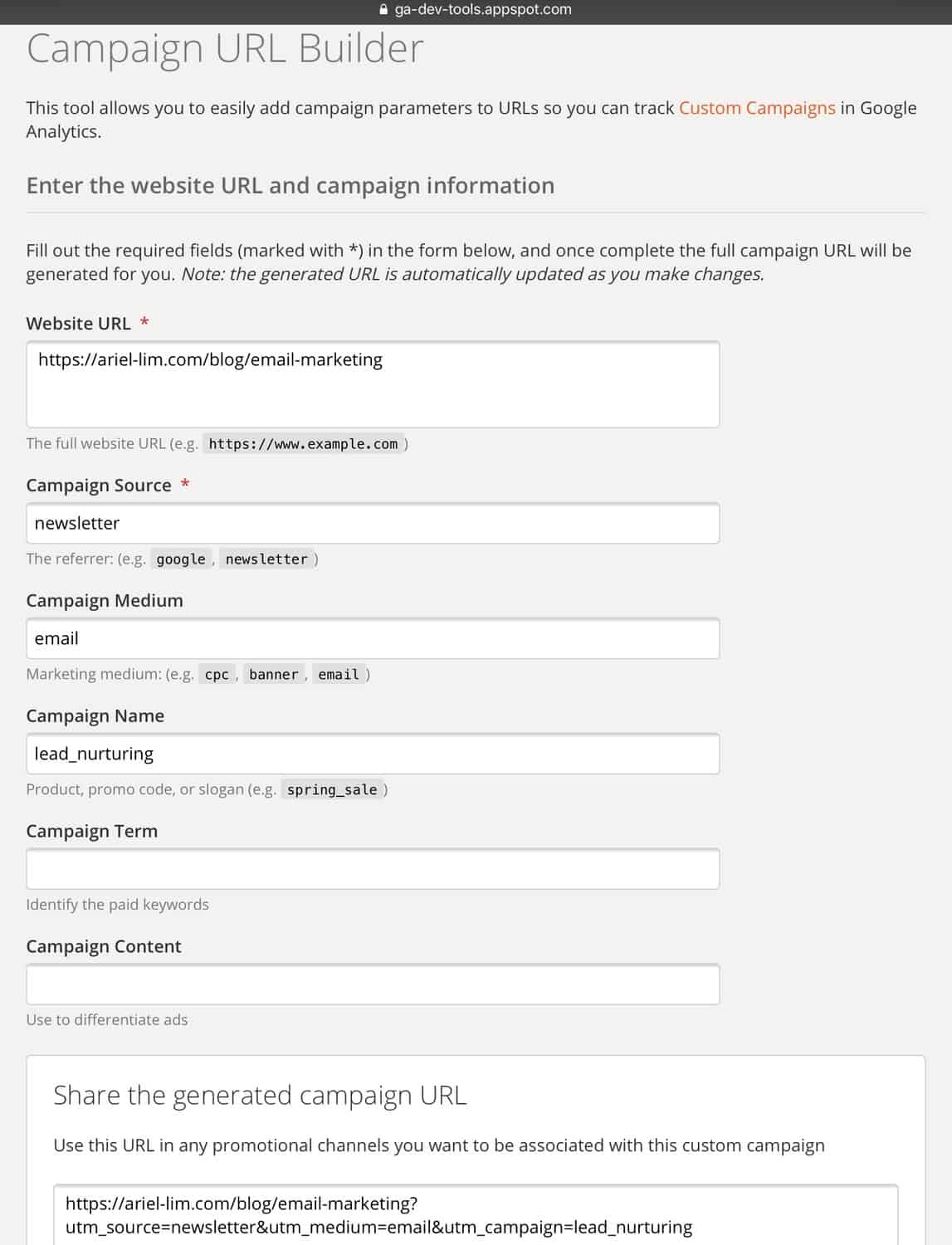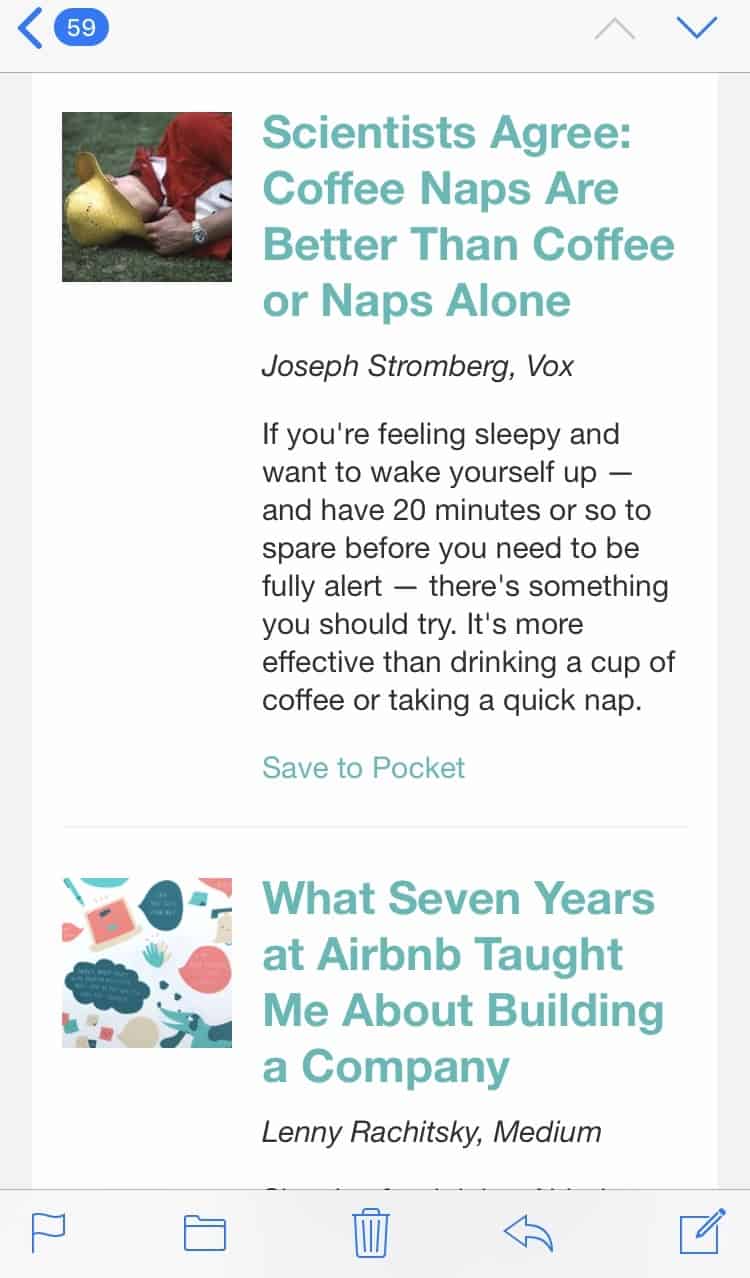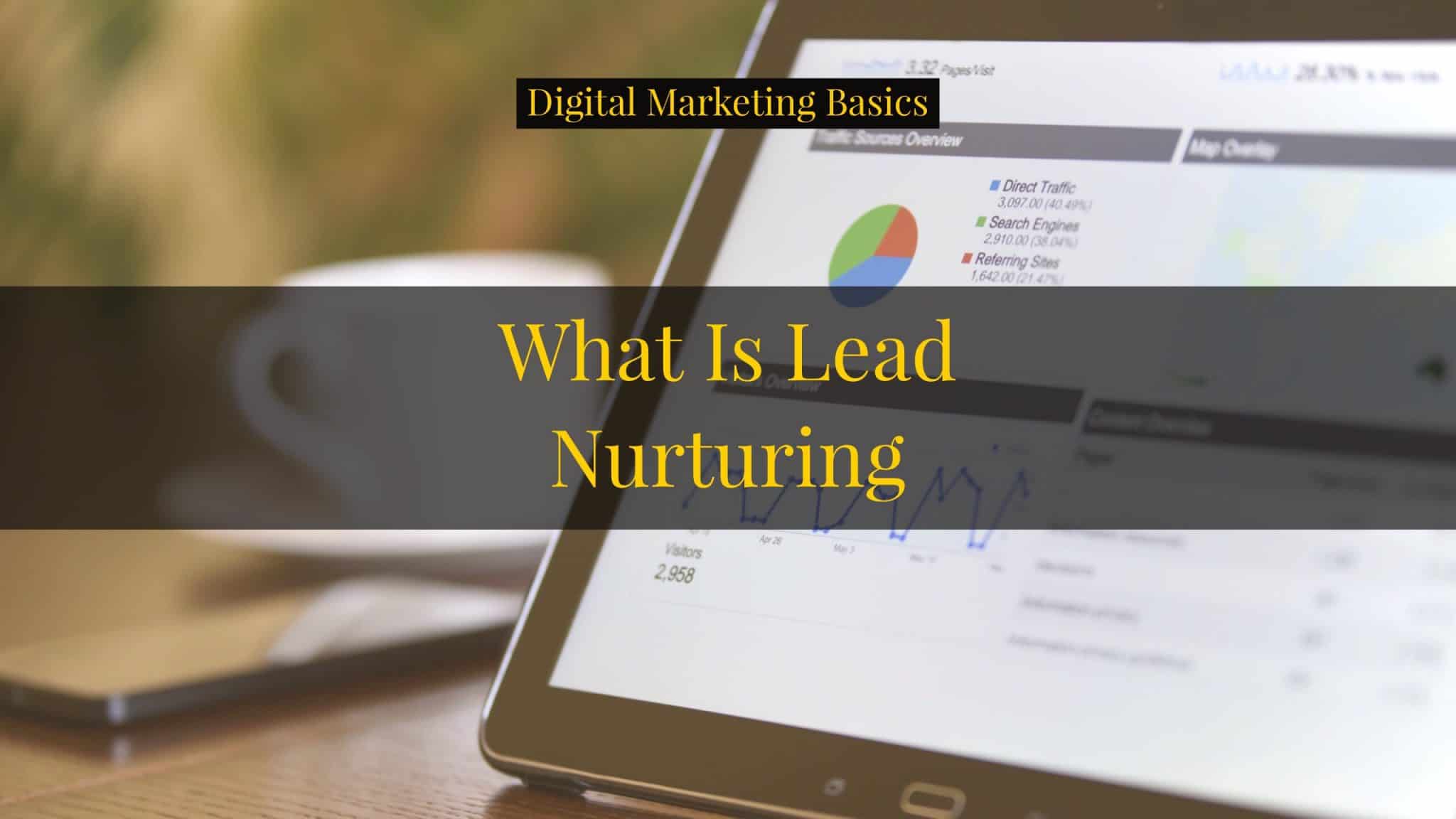If you want to be successful with email marketing, applying any one of these tactics will get you ahead of the curve immediately.
These tactics can be applied ala carte, but they work best when combined together with a holistic strategy as the foundation.
9 Tactics You Can Do Today to Improve Your Email Marketing Campaigns
1. Share Your Story
Developing relationships with your email list means one thing: thinking about what is best for them.
People don’t use products/services because they want it nor need it. They use them for the benefits. They use them because it solves a problem or a pain point.
Action point: don’t hit the send button in your next promotion disguised as a newsletter.
Share a story instead. Talk about industry trends. Share an insider opinion on a recent strategic move. Anything except mentioning your products/services.
If you used to send 1 promotional email a week, cut that down to once a month. Substitute the 3 emails with educational content.
If you want to stick with 1 promotional email a week, add in 3 to 4 more educational emails for the week.
Take note, however, that this frequency of email sends is already considered spammy behavior.
2. Apply Basic Segmentation
Segmenting your list is one of the easiest way to increase your engagement — opens and clicks.
Segmented email campaigns have an open rate that is 14.32% higher than non-segmented campaigns. Click-throughs are 100.95% higher in segmented email campaigns than non-segmented campaigns.
Action point: don’t reinvent the wheel. Start with these basic segmentation.
- Geographic
- Address (e.g. city, barangay)
- Language
- Climate
- Area
- Demographics
- Birthdays
- Age
- Other Dates
- Gender
- Education
- Social Status (e.g. single, married)
- Family
- Occupation
- Role
- Industry
- Income
- Psychographics
- Persona
- Lifestyle
- Concerns
- Personality
- Values
- Attitudes
- Behavioral
- Products/Services Availed
- Products/Services Interested
- Intent
- Buyer Stage
- Frequency of Purchase
- Engagement Level
- Content Topic Interests
- Content Format
- Buying Behavior
This is not an exhaustive list, but merely a starting point. Depending on the nature of your organization, some will be applicable while some won’t make sense. The important takeaway is to start segmenting right now.
3. Create Educational Content for Each Segment
Educational content is a type of content that doesn’t mention any product/service or prices.
The main objective of this type of content is to either generate awareness or inform. Generating awareness means making the reader realize they have a problem, need, or want. Informing means letting the reader know about a solution or a topic.
Still struggling? Use the 5 stages of awareness to help you create your next content.
Action point: think about the problems your product/service is solving, then create content about that problem without mentioning your product/service.
For example, you’re an accountant and you prepare tax returns. Create content about the different taxes, what they mean, what forms to use, and what the due dates are.
If you’re a cafe, instead of talking about your one-of-a-kind coffee or your delectable cakes, create content about coffee — everything from planting, sourcing, coffee cherries, processing of the beans, different types of grinds, etc.
In both examples, you’re talking about your industry and what you do without talking about yourself. You’re merely sharing your expertise. You’re telling the whole world that you know what you’re talking about.
4. Send Targeted Content
Generic content is ineffective. It’s the biggest reason why, despite a lot of content are created daily, only a few of them stand out.
Once you create educational content, the next logical step is to distribute it. This can be done in two ways: organically and through paid channels.
Action point: group your educational content together to create a series called a lead nurturing campaigns
Continuing from the previous example of a cafe, you can create a series called “from bean to cup.”
In this email series, you can start with the planting season, perfect altitudes for growing coffee, etc. Then the next email can be about taking care of the coffee tree and the time it takes for it to start bearing coffee cherries (around 5 years). Your next email can be about picking the cherries, the different methods of processing, etc.
5. Send from Your Email Address
Sending from your email address says a lot about your organization — whether you’re personable or not.
The biggest benefit of using this tactic is it increases your chance of engagement with your customers. Take note, though, that the biggest downside of this tactic is you’ll start receiving a lot of email replies from them — both good and bad.
Action point: Pick one person to represent the organization. Use his/her name in the “from name” in your email marketing software.
Most organizations have a hard time choosing a person to represent them publicly. For small businesses and startups, this is usually the founder. For others, choosing one might involve a couple of discussions.
One criteria that must be considered here is the risk of turnover. Sending from a “person” allows the recipients to develop a relationship with the organization. They can put a face behind your organization. If the sender keeps on changing, this will be difficult to achieve.
Lastly, it doesn’t really matter if the email was written by the sender (i.e. founder, or someone else). What matters more is the people behind it are aligned and aiming for a common goal.
6. Use Automation to Your Advantage
Most email marketing software have automation built in it. This allows you to do more with less.
The demands for the modern marketer is increasing. You simply can’t spend all your time in the office nor take your work home every day. It’s not sustainable.
The only option is to achieve the results you need by using technology to speed things up and perform the repetitive tasks.
Action point: Determine specific trigger actions and/or behaviors that would signify the start of your email automation series.
For example, you can create an email course about the different grinds of coffee. The specific trigger, i.e. the action that would start the automation, is a signup for the email course. So, once they filled-up a specific form and/or page on your website, the automation starts. They immediately receive email #1. After a predetermined time period, for example, after 3 days, they’d receive email #2, and the next email until they reach the end.
7. Get Content Ideas from Other Departments
Successful email marketers don’t create content by themselves. In fact, it’s far easier to get content from other departments.
In most cases, marketers aren’t the only ones who interact with their customers. So, it’s only natural that you get other people’s point of view — sales, IT, operations, etc.
Action point: Ask the other departments what customers say or complain about. Or, an even better option, is to spend time shadowing what they do so you get first-hand feedback on what’s really happening.
For example, you’re Starbucks. Instead of shutting yourself inside your office, go to one (or more) of the stores. Spend time behind the counter. Ask the customers themselves.
Are people asking or ordering the daily offerings? What are their comments about it? Is it too sweet? Just right? What about the tumblers, are people looking at them but not buying? Why?
You can’t find the answers to these questions with reports alone. Nor can you get them inside the office. Go out and engage with your customers and other departments.
8. Add Variety to Your Email Sends
There are 12 different types of marketing emails you can send from. Most organizations only use one — the promotional newsletter.
If you’re one of those organizations, you’re only harnessing less than 10% of email marketing’s full potential.
Action point: Learn the different types of marketing emails and start using them. One of the most powerful one was already tackled in a separate tactic — lead nurturing.
If you’re continuously creating content and publishing them on your blog, you can compile them into a real newsletter and send that out.
9. Use Marketing Offers
Marketing offers are significant pieces of content that people are willing to gain access to in exchange for their contact information. It’s also known as lead magnets, trip wires, and content upgrades. Regardless of what term you use, the most important thing to remember is that they are used to collect information that you can use later on.
Email marketing without a way to generate new leads is doomed to fail from the start. Email lists naturally decay at 22.5% per year. Without a way to replenish your list, you won’t get any significant results from your email marketing.
Creating marketing offers is the only proven way of generating new leads in today’s world.
Action point: The most common marketing offer is a newsletter signup. However, most organizations only have that as their sole offer — their only lead generation tactic. It’s simply not effective.
Marketing offers can be webinars, PDF reports, eBooks, email courses, brochure downloads, how-to guides, etc.
Think of how you can create different marketing offers for your organization. Use that to build your email list.
Conclusion
Email marketing remains one of the most effective activities marketers can implement. It has the highest ROI across other channels. It also is the most preferred medium of business communications.
I shared 9 different tactics you can apply today to grow your email list. You can. Use them ala carte, but you’ll get better results if you combine them together.
Now, you can implement an email marketing campaigns with a solid strategic foundation that brings in results.
Did I miss any email marketing tactics? If so, just let me know in the comments. I’d love to hear what you think of them as well.



